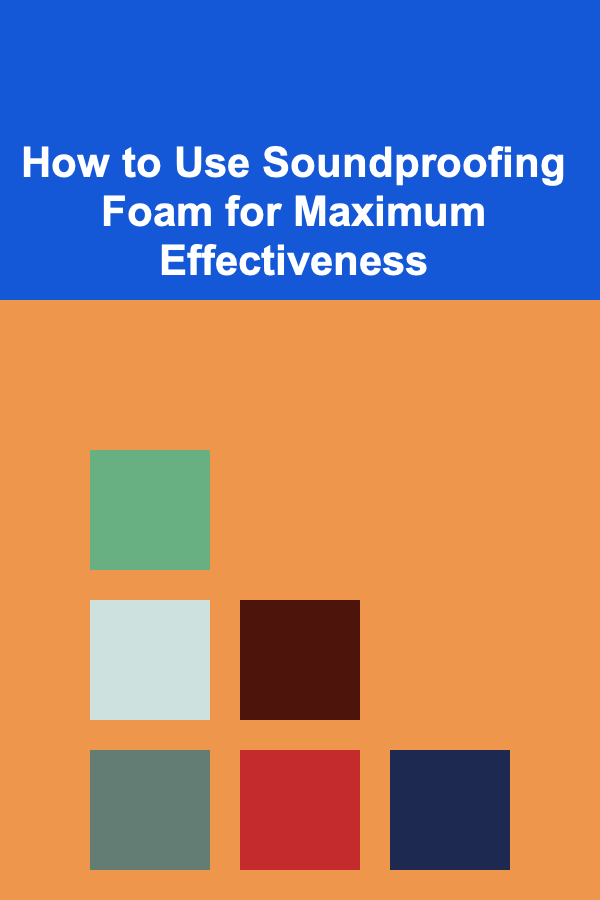
Selecting the Best Vacuum Attachments for Every Cleaning Job
ebook include PDF & Audio bundle (Micro Guide)
$12.99$10.99
Limited Time Offer! Order within the next:

Vacuum cleaners are indispensable tools for maintaining a clean and healthy living environment. However, the true versatility of a vacuum cleaner lies not just in the main unit, but in the array of attachments that come with it or can be purchased separately. Selecting the right attachment for the specific cleaning task can significantly improve efficiency, effectiveness, and even protect delicate surfaces. This comprehensive guide will delve into the various types of vacuum attachments, their specific uses, and how to choose the best ones for different cleaning scenarios.
Understanding the Fundamentals: Suction, Airflow, and Surface Type
Before diving into the specific attachments, it's crucial to understand the underlying principles that govern how a vacuum cleaner works and how different attachments influence its performance.
- Suction: This refers to the force that draws dirt and debris into the vacuum. Higher suction is generally better for deep cleaning carpets and rugs.
- Airflow: Airflow is the volume of air moved by the vacuum. Adequate airflow is essential for effectively lifting dirt and debris from surfaces. Attachments can either enhance or restrict airflow, depending on their design.
- Surface Type: The type of surface being cleaned (e.g., hardwood, carpet, upholstery) dictates the most appropriate attachment. Using the wrong attachment can damage delicate surfaces or be ineffective on others.
The ideal vacuum attachment balances suction, airflow, and surface compatibility to achieve optimal cleaning results without causing damage.
The Essential Arsenal: Common Vacuum Attachments and Their Uses
Let's explore the most common vacuum attachments and their specific applications:
Crevice Tool
The crevice tool is a long, narrow attachment designed to reach tight spaces and corners. It's invaluable for:
- Cleaning along baseboards and moldings: The narrow profile allows you to get right up against the edges.
- Reaching between furniture cushions: Perfect for removing crumbs, dust, and pet hair from hard-to-reach areas.
- Cleaning car interiors: Excellent for getting into the crevices of seats and dashboards.
- Cleaning window tracks and sliding door tracks: Effectively removes dirt and debris that accumulate in these areas.
Choosing the right crevice tool: Look for a tool made of durable plastic that can withstand repeated use. Some crevice tools have angled tips for even better access.
Dusting Brush
The dusting brush typically features soft bristles that gently remove dust and debris from delicate surfaces. It's ideal for:
- Cleaning furniture: Safely removes dust and cobwebs from wood, glass, and other delicate surfaces.
- Dusting bookshelves and lampshades: Prevents scratching or damage to delicate items.
- Cleaning electronic equipment: Removes dust from computer keyboards, televisions, and other electronics.
- Detailing car interiors: Gentle enough for dusting dashboards and other interior surfaces.
Choosing the right dusting brush: Opt for a brush with soft, natural bristles (like horsehair) for the gentlest cleaning. Ensure the bristles are densely packed for effective dust removal.
Upholstery Tool
The upholstery tool is designed specifically for cleaning fabrics and upholstery. It usually has a wider nozzle than the crevice tool and may feature a brush or rubber strip to agitate the surface.
- Cleaning sofas, chairs, and other upholstered furniture: Removes dust, dirt, and pet hair from fabric surfaces.
- Cleaning car seats: Effectively cleans cloth or leather seats.
- Cleaning mattresses: Helps remove dust mites and allergens.
Choosing the right upholstery tool: Look for a tool with a brush or rubber strip to loosen embedded dirt. Some upholstery tools also have a rotating brush for more aggressive cleaning. Pay attention to the material; a microfiber pad is excellent for lifting dust and allergens without damaging delicate fabrics. Consider a tool with a removable, washable cover for easy maintenance.
Floor Brush (Hard Floor Tool)
The floor brush is designed specifically for cleaning hard floors like hardwood, tile, and laminate. It typically has soft bristles or a felt pad to prevent scratching.
- Cleaning hardwood floors: Gently removes dust and debris without damaging the finish.
- Cleaning tile floors: Effectively cleans grout lines and textured surfaces.
- Cleaning laminate floors: Prevents scratching and damage to the surface.
Choosing the right floor brush: Opt for a brush with soft bristles or a felt pad to prevent scratching. Ensure the brush is wide enough to cover a large area efficiently. Some floor brushes have a pivoting head for easy maneuverability. Consider brushes with articulating heads for easily cleaning under furniture.
Power Brush/Turbo Brush
The power brush, also known as a turbo brush, features a rotating brush powered by the vacuum's airflow or a separate motor. It's designed for more aggressive cleaning of carpets and rugs.
- Deep cleaning carpets and rugs: Agitates the fibers to loosen embedded dirt and pet hair.
- Removing pet hair from furniture: The rotating brush effectively lifts pet hair from upholstery.
- Cleaning stairs: Provides extra cleaning power on carpeted stairs.
Choosing the right power brush: Consider whether you need a motorized brush (which is more powerful) or an air-driven brush. Look for a brush with adjustable height settings to accommodate different carpet pile heights. Check for easy access to clean the brush roll of tangled hair and debris.
Specialized Attachments for Specific Cleaning Needs
Beyond the essential attachments, there are specialized tools designed for specific cleaning tasks:
Extension Wand
An extension wand adds length to the vacuum hose, allowing you to reach high places or awkward angles. It's useful for:
- Cleaning ceilings and walls: Easily reaches cobwebs and dust in high corners.
- Cleaning under furniture: Provides extra reach to clean under beds and sofas.
- Reaching behind appliances: Allows you to clean behind refrigerators and washing machines.
Choosing the right extension wand: Look for a lightweight and durable wand that is easy to maneuver. Telescoping wands offer adjustable length for added versatility.
Pet Grooming Tool
A pet grooming tool is designed to gently remove loose fur from your pet's coat. It usually has soft bristles and a gentle suction setting.
- Grooming pets: Removes loose fur before it ends up on your furniture and carpets.
- Reducing shedding: Regular grooming with this tool can significantly reduce shedding.
Choosing the right pet grooming tool: Look for a tool with soft, rounded bristles that won't irritate your pet's skin. Ensure the suction is adjustable to prevent discomfort. Some models include a self-cleaning function to easily remove collected fur.
Mattress Tool
Similar to an upholstery tool, a mattress tool is specifically designed for cleaning mattresses. Often wider and flatter than a standard upholstery tool, it aims for maximum surface area coverage.
- Deep cleaning mattresses: Removes dust mites, allergens, and dead skin cells.
- Improving sleep hygiene: Regular cleaning can improve air quality and reduce allergy symptoms.
Choosing the right mattress tool: Look for a wide, flat tool with a brush or rubber strip to loosen debris. Some models have UV light sanitizers to kill bacteria and dust mites, though the effectiveness of these can vary. Consider a tool with a HEPA filter to capture even the smallest particles.
Mini Motorized Brush
A smaller version of the power brush, the mini motorized brush is perfect for cleaning smaller areas like stairs and car interiors. It provides the same powerful agitation as a full-sized power brush, but in a more compact and maneuverable form.
- Cleaning stairs: Easily cleans carpeted or upholstered stairs.
- Cleaning car interiors: Reaches tight spaces and removes embedded dirt and pet hair.
- Cleaning upholstery: Provides targeted cleaning for sofas, chairs, and other upholstered furniture.
Choosing the right mini motorized brush: Consider the power and size of the brush. Look for a model with a good balance of suction and brush speed. Check for easy access to clean the brush roll.
Water Lift Tool
This specialized tool is used in wet/dry vacuums to remove standing water. It typically has a squeegee or rubber blade to effectively lift water from surfaces.
- Removing spills: Quickly cleans up spills on hard floors.
- Cleaning flooded basements: Helps remove standing water after a flood.
- Drying carpets: Can be used to extract excess water from carpets after cleaning.
Choosing the right water lift tool: Look for a tool with a durable squeegee or rubber blade that creates a tight seal with the floor. Ensure the tool is compatible with your wet/dry vacuum model.
Flexible Hose
A flexible hose provides extra reach and maneuverability, making it easier to clean awkward spaces.
- Cleaning tight spaces: Allows you to reach under furniture and behind appliances.
- Cleaning car interiors: Provides greater flexibility for cleaning hard-to-reach areas.
Choosing the right flexible hose: Look for a hose that is durable and flexible enough to reach tight spaces without kinking. Ensure the hose is compatible with your vacuum model.
Matching the Attachment to the Task: A Practical Guide
Here's a practical guide to help you choose the best attachment for specific cleaning tasks:
- Hardwood Floors: Use a floor brush with soft bristles or a felt pad to prevent scratching. Avoid using power brushes, as they can damage the finish.
- Carpets and Rugs: Use a power brush to agitate the fibers and loosen embedded dirt. Adjust the height settings to match the carpet pile height.
- Upholstery: Use an upholstery tool with a brush or rubber strip to loosen dirt. Test the tool on an inconspicuous area first to ensure it doesn't damage the fabric. Consider using a steamer in conjunction with the upholstery tool for stain removal and sanitization.
- Baseboards and Moldings: Use a crevice tool to reach along the edges and remove dust and debris.
- Furniture: Use a dusting brush with soft bristles to gently remove dust from wood, glass, and other delicate surfaces.
- Car Interiors: Use a crevice tool, dusting brush, and upholstery tool to clean seats, dashboards, and carpets. Consider a mini motorized brush for deep cleaning carpets and removing pet hair.
- Stairs: Use a power brush or mini motorized brush to clean carpeted stairs. Use a crevice tool to clean along the edges.
- Pet Hair Removal: Use a power brush, mini motorized brush, or pet grooming tool to remove pet hair from carpets, furniture, and clothing.
- Mattresses: Use a mattress tool to remove dust mites, allergens, and dead skin cells. Consider using a vacuum with a HEPA filter for optimal results.
- High Places: Use an extension wand with a dusting brush to reach ceilings, walls, and high shelves.
- Electronics: Use a dusting brush with soft bristles to gently remove dust from computer keyboards, televisions, and other electronics.
Beyond the Basics: Factors to Consider When Choosing Attachments
Choosing the right attachments involves more than just knowing their functions. Here are some key factors to consider:
Compatibility
The attachment must be compatible with your vacuum cleaner model. Check the manufacturer's specifications to ensure compatibility. Universal attachments are available, but they may not fit as securely or perform as well as those specifically designed for your vacuum.
Quality and Durability
Invest in high-quality attachments that are made from durable materials. Cheap attachments may break easily or not perform effectively. Look for attachments made from sturdy plastic, metal, or natural materials like horsehair.
Ease of Use
The attachment should be easy to attach and detach from the vacuum cleaner. It should also be comfortable to use and maneuver. Consider the weight and balance of the attachment.
Storage
Consider how you will store the attachments when they are not in use. Some vacuum cleaners come with onboard storage for attachments. If not, you may need to purchase a separate storage container.
Budget
Vacuum attachments range in price from inexpensive to quite expensive. Set a budget and stick to it. Prioritize the attachments that you will use most often.
Vacuum Type
The type of vacuum cleaner you own influences the attachments available and their effectiveness. For example:
- Upright Vacuums: Often come with a variety of attachments, but maneuverability with the hose and wand can be limited.
- Canister Vacuums: Typically offer greater maneuverability and a wider range of attachments.
- Stick Vacuums: Attachments are often more compact and lightweight, designed for quick cleanups.
- Handheld Vacuums: Attachments are limited, but designed for portability and spot cleaning.
- Robot Vacuums: Generally do not support external attachments.
Maintaining Your Vacuum Attachments for Optimal Performance
Proper maintenance is crucial for ensuring that your vacuum attachments perform optimally and last longer. Here are some tips:
- Clean attachments regularly: Remove dust, dirt, and debris from attachments after each use. Use a soft brush or cloth to clean the surfaces.
- Remove tangled hair and fibers: Regularly remove tangled hair and fibers from power brushes and upholstery tools. Use scissors or a seam ripper to cut the hair and fibers.
- Wash washable attachments: Wash washable attachments, such as upholstery tool covers, according to the manufacturer's instructions.
- Replace worn or damaged attachments: Replace worn or damaged attachments as needed. Using damaged attachments can damage your vacuum cleaner or reduce its cleaning effectiveness.
- Store attachments properly: Store attachments in a clean, dry place when not in use. Avoid storing attachments in direct sunlight or extreme temperatures.
Troubleshooting Common Issues with Vacuum Attachments
Even with proper maintenance, you may encounter some common issues with vacuum attachments. Here's how to troubleshoot them:
- Reduced suction: Check for clogs in the attachment or hose. Remove any obstructions that may be blocking the airflow. Also, ensure the vacuum bag or dustbin is not full.
- Attachment not fitting properly: Ensure the attachment is compatible with your vacuum cleaner model. Check for any damage or wear on the attachment or vacuum cleaner hose.
- Attachment not rotating: Check for tangled hair or fibers in the power brush. Remove any obstructions that may be preventing the brush from rotating. If it's a motorized brush, check the power connection.
- Attachment making strange noises: Check for loose parts or debris in the attachment. Tighten any loose screws or bolts. If the noise persists, the attachment may need to be replaced.
Conclusion: Mastering the Art of Vacuuming with the Right Tools
Selecting the right vacuum attachments is essential for achieving optimal cleaning results and protecting your surfaces. By understanding the different types of attachments, their specific uses, and how to maintain them, you can transform your vacuum cleaner into a versatile cleaning tool that can tackle any mess. Take the time to assess your cleaning needs, research your options, and invest in high-quality attachments that will make your cleaning routine more efficient and effective. With the right tools at your disposal, you can maintain a clean, healthy, and comfortable living environment for you and your family.

How to Organize a Family Sports Tournament in Your Living Room
Read More
How to Use Affordable Decor to Create a Modern Aesthetic
Read More
How to Use Soundproofing Foam for Maximum Effectiveness
Read More
How to Use Under-Cabinet Lighting in Your Kitchen
Read More
The Comprehensive Guide to Cloud Architecting: From Concepts to Production
Read More
The Talent Acquisition Specialist's Playbook: Essential Tools for Successful Hiring
Read MoreOther Products

How to Organize a Family Sports Tournament in Your Living Room
Read More
How to Use Affordable Decor to Create a Modern Aesthetic
Read More
How to Use Soundproofing Foam for Maximum Effectiveness
Read More
How to Use Under-Cabinet Lighting in Your Kitchen
Read More
The Comprehensive Guide to Cloud Architecting: From Concepts to Production
Read More